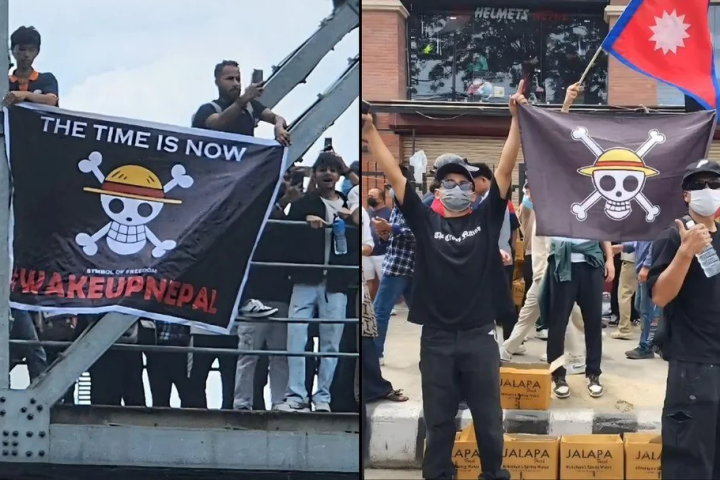by Leigh Wingfeld
A cartoon skeleton adorned with a straw hat flies high in the air, the smoke of rebellion alongside it. This sounds like a scene out of a comic, but this scene played out in Indonesia, Nepal, and the Philippines recently. The flag is from One Piece, the popular anime from Japan. How did a flag from an anime become a symbol of rebellion?
One Piece, which first aired in 1999, follows a young man by the name of Luffy and his band of pirates traversing the world and liberating the oppressed along the way. As one of the longest running and most popular animes in the world, One Piece has touched thousands of hearts, especially that of East Asian youth.
The use of the straw hat pirates’ flag served as not only a symbol of rebellion but a unifying call to action for the Gen-Z protesters in Indonesia, Nepal, and the Philippines. These protestors overthrew their oppressive government in 48 hours—an event the Cento covered last issue, and which is ongoing even today.
Using pop culture imagery to symbolize belief in a movement is not uncommon. Some other key examples of pop culture being used in protest is Guy Fawkes mask from “V for Vendetta” and the three finger salute from “The Hunger Games”. In American consciousness especially, the Fawkes mask tends to be a symbol for anti-establishment protest, and has been used by the rebellion group “Anonymous” for years. Meanwhile, “The Hunger Games” salute has been used, for example, in Myanmar as a symbol of solidarity for democracy groups across the region.
There is a reason the first thing authoritarian regimes take control of is the media–if you can control the narrative, you can control the people. Stories from various forms of media connect people to a movement or ideology: to keep the story alive is to keep freedom alive.

